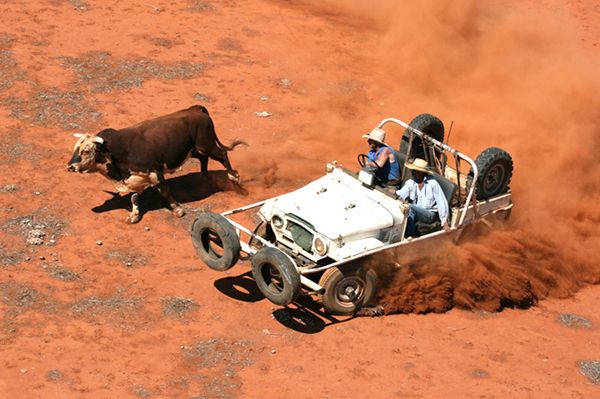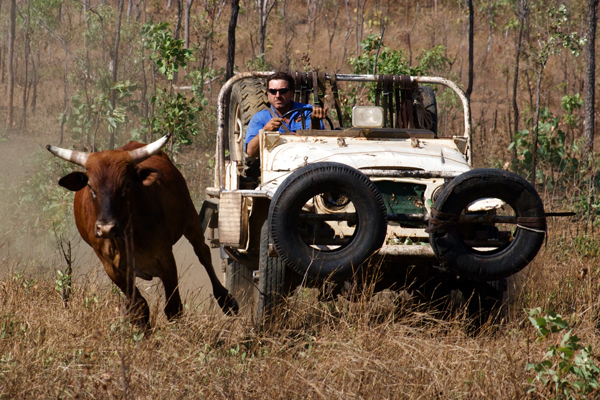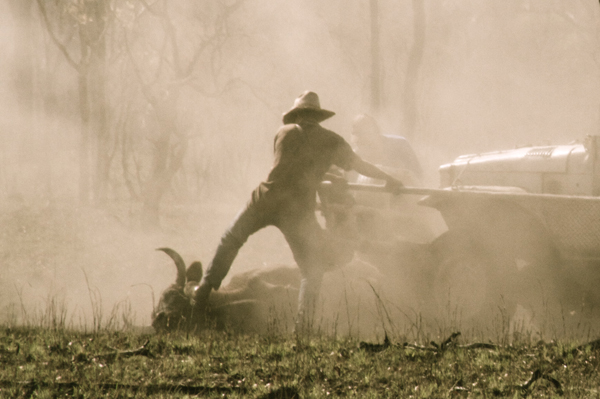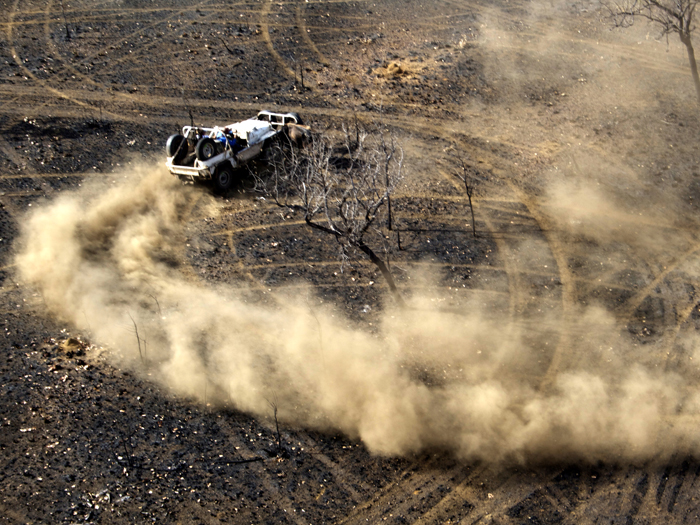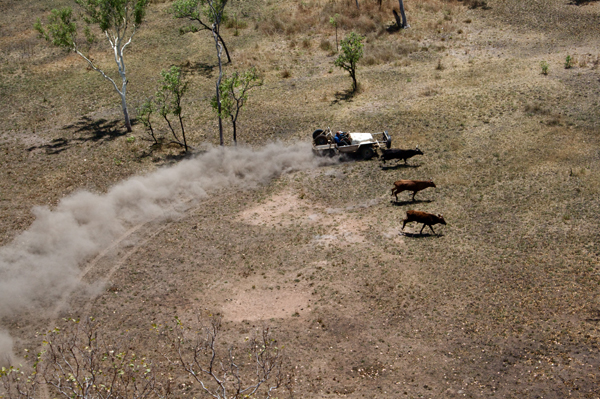70 km/hr & 180 BPM
Host: Lochon Contracting
Written by Tini O’Loughlin – Owner, Lochon Contracting.
You catch wild bulls? How? Where? Why?
I am sitting in the passenger seat of the ‘blue dog’, one of our bull buggies. The terrain is rough, the grass is high. Locky spots the ‘flat’ in a distance and while radioing the helicopter pilot to see how far away he is and how many bulls he is bringing out of the scrub, he heads for the bullcatching flat. We have to get out of the long grass. It would be a suicide run chasing a bull in this. Ant-beds and gullies, tree stumps, and logs are hiding in the thick undergrowth. Hitting one of these at high speed . . . well, I don’t think I have to explain the danger of it.
Seeing the chopper in the distance we suddenly spot the first bull trotting out of the wattle. “Here we go”, I am thinking. Locky watches, slowly approaches the bull from an angle to encourage him to keep walking onto the flat. No grass, no trees and plenty of room to circle the clean skin (unmarked) bulls. I pull my hat down more, push my foot against the frame of the buggie and hold on tight for the hight speed chase ahead of us.
My heart starts pumping and the adrenaline kicks in. All senses are super sharp. There is no room for error! And I am only the passenger. I have never felt unsafe sitting next to Locky. There is an art to driving the buggie and I know that he has the skills to do so. He watches the animal closely, he scans the ground, he looks out for obstacles, and adjusts his course and speed accordingly. The right moment to roll a bull is easy to miss. Experience is what you need to determine this moment. The bull must not be fresh, so you chase him around on a clear flat with good vision. He must not be fully exhausted either. When you see him slowing down, starting to look back while running, you prod him on the hip with the tires mounted to the front of the buggie and roll him.
The extended frame at the buggie’s front sits over the bull and holds him down on the ground. This is the moment I have been waiting for. With a strap in hand, I quickly jump off and put my foot on the neck of this huge cleanskin bull (no brand, no earmark, he is a free roamer). It is a strong bull with sharp horns and an attitude. Locky is right there. He puts his foot on the neck too and grabs one of the bull’s horns. I bend down and start wrapping the strap around the knuckles of the front legs as quickly and tightly as I can. Restrained by the strap, we leave the bull and jump back in the catcher.
The dust hasn’t settled yet, and the helicopter is already bringing out another few bulls. It’s on again. Another chase, another bull. While we pursue the next cleanskin, the other bull buggie, which has been sitting back in a distance, comes in and holds the rest of the bulls to keep them from running back into the scrub. Dust is swirling, bulls are getting chased, rolled, tied, and left sitting there, wondering what just happened.
Before we have even tied off the last bull, the other buggie has already started loading the first one onto the truck. This is what you call team work and a reliable and alert crew. Everyone in the team should be able to take any position, therefore we rotate. So, today was my day as the strapper, tomorrow we swap around. The only consistency is Locky as the actual bull catcher, the operator of the “blue dog”, and if needed he is his own strapper.
Although bullcatching may sound like a big adventure with a thrill element to it, it is hard work and requires the greatest care when carried out. It must be done quickly to limit the stress on the animal, and it is utmost important to not damage the bull. In fact, we don’t want to damage either the animal, the people, or the gear. As with everything you do, you have got to be careful.
So, the “How” has been covered, the “Why” and “Where” of bullcatching is still unanswered.
Why don’t you ckeck out tomorrow’s blog? I will have some answers ready and I will throw in a few more “How” stories, too.
Thank you for reading this and
Stay tuned.
Tini and Locky

